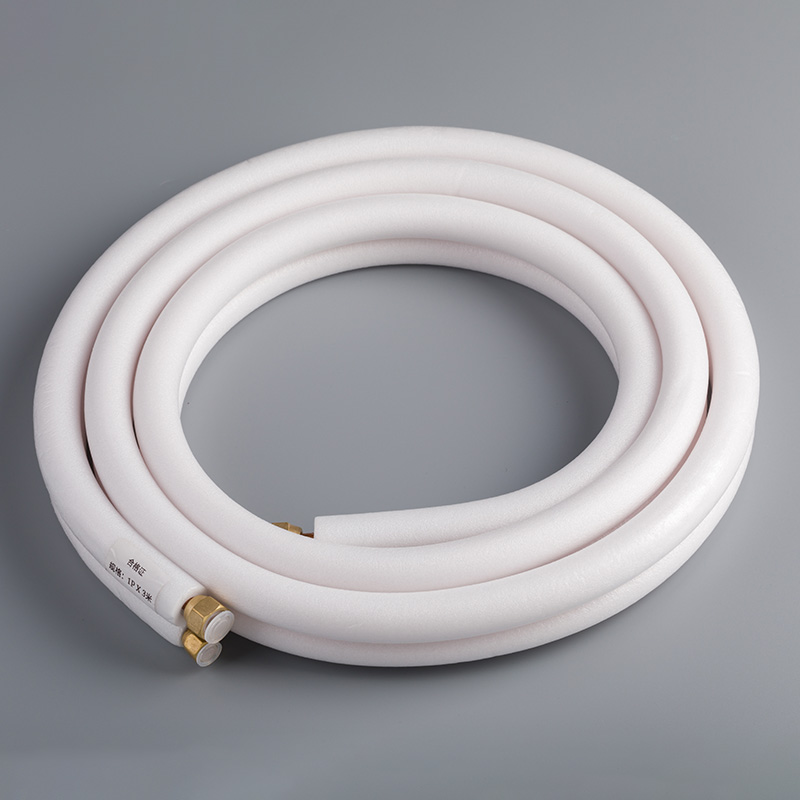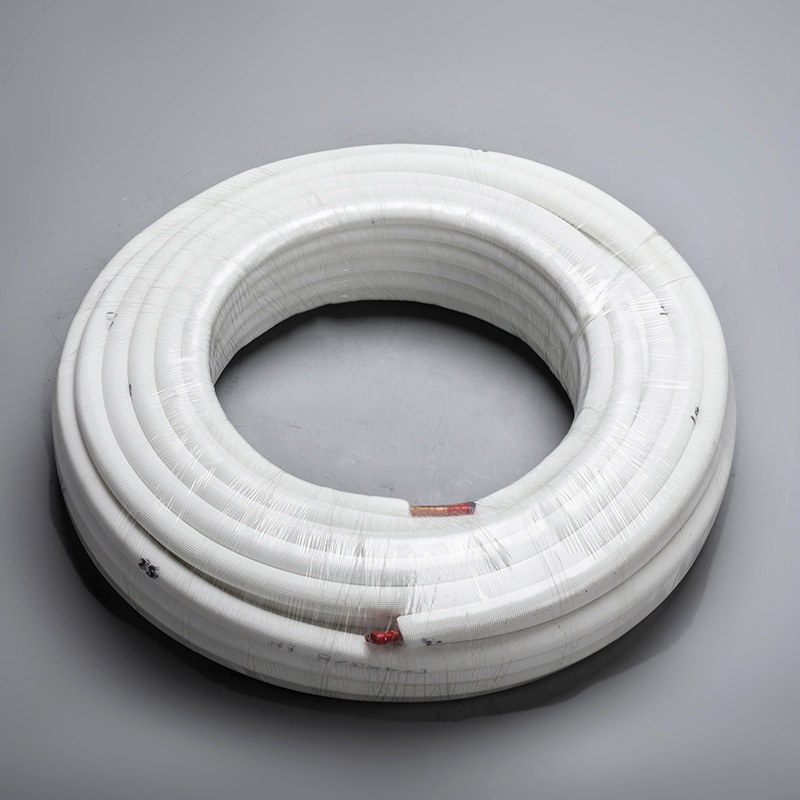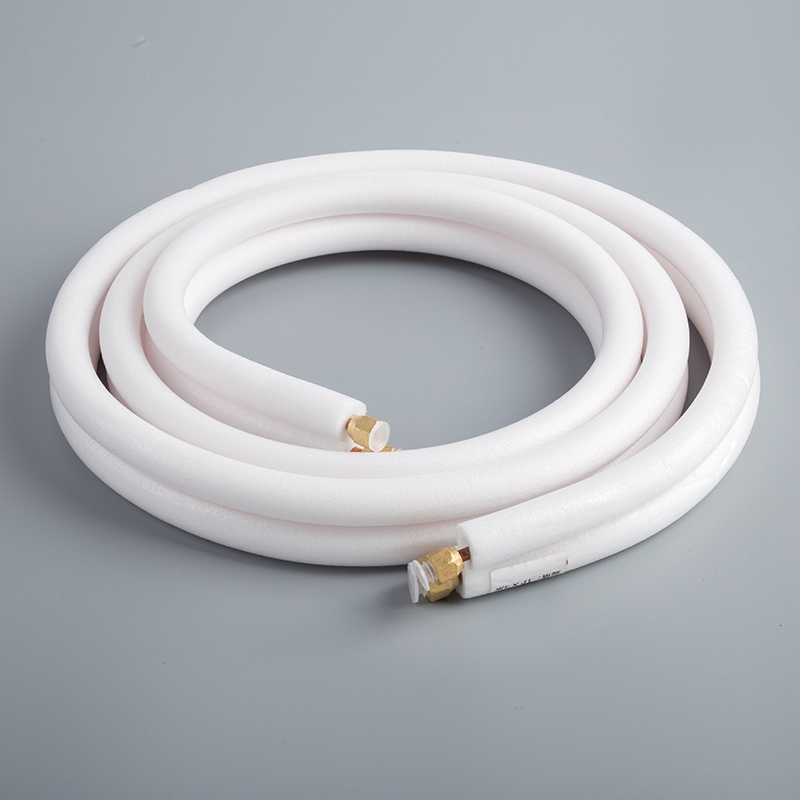Guide to Choosing the Best Copper Pipes for Air Conditioning

Selecting the appropriate copper pipes for air conditioning systems is paramount to ensuring optimal performance and longevity. This blog provides a comprehensive Guide on Choosing the Right Air Conditioning Copper Pipes, covering essential factors and considerations. Copper pipes stand out for their exceptional heat transfer capabilities, durability, and corrosion resistance. By understanding the significance of copper pipes in HVAC systems, individuals can make informed decisions to enhance efficiency and reliability.
Understanding Copper Pipes

When it comes to Choosing the Right Air Conditioning Copper Pipes, understanding the different types available is crucial for optimal system performance.
Types of Copper Pipes
Type K Copper Pipes
Type K Copper Pipe stands out with its thick wall construction, making it highly durable and suitable for various applications such as water distribution, fire protection, oil systems, and HVAC installations. It is commonly used for underground applications where extreme strength is needed.
Type L Copper Pipes
Type L Copper Pipe finds common usage in interior plumbing, fire protection, and certain HVAC applications. This type is thinner than Type K but thicker than Type M, offering a balance between strength and cost-effectiveness.
Type M Copper Pipes
Type M Copper Pipe is a cost-effective choice for repairs, extensions, or interior water supply lines. It is thinner compared to Type K and Type L pipes but serves well in residential water supply systems.
DWV Copper Pipes
DWV (Drain-Waste-Vent) Copper Pipes are specifically designed for drainage systems in buildings. They ensure efficient waste removal and ventilation within the structure.
Properties of Copper Pipes
Durability
The durability of copper pipes ensures long-term reliability in air conditioning systems. Their resistance to corrosion and wear makes them a preferred choice for various applications.
Corrosion Resistance
Copper pipes exhibit exceptional resistance to corrosion, maintaining their integrity over time even in challenging environments. This property contributes significantly to the longevity of HVAC systems.
Thermal Conductivity
The superior thermal conductivity of copper allows for efficient heat transfer within air conditioning units. This property enhances the overall performance and energy efficiency of the system.
Common Applications in Air Conditioning
Residential Systems
In residential settings, copper pipes are widely used for air conditioning due to their reliability and longevity. They ensure consistent cooling performance throughout homes.
Commercial Systems
Commercial air conditioning systems benefit from the versatility of copper pipes, catering to diverse cooling needs in office buildings, shopping centers, and other commercial spaces.
Industrial Systems
Industrial air conditioning units rely on robust copper piping to withstand demanding conditions. The durability and thermal conductivity of copper support efficient cooling processes in industrial settings.
Factors to Consider When Choosing Copper Pipes
When selecting Choosing the Right Air Conditioning Copper Pipes, several critical factors come into play to ensure optimal system performance and efficiency.
Pipe Size and Diameter
Standard Sizes
Consider the standard sizes available for copper pipes, ranging from ⅛ inch to 8 inches in diameter. Manufacturers determine these sizes based on specific applications and system requirements.
Larger diameters are suitable for high-volume air conditioning units, while smaller sizes cater to residential or light commercial systems.
Properly matching the pipe size to the unit's cooling capacity is essential for efficient heat transfer and overall system performance.
Sizing for Specific Applications
Tailoring the pipe size to the application is crucial for achieving optimal results. Residential air conditioning systems typically require smaller diameter pipes compared to industrial units.
Understanding the manufacturer's specifications and guidelines helps in selecting the right size for each unique application.
By considering factors such as refrigerant flow rates and system layout, individuals can choose copper pipes that align with their specific air conditioning needs.
Wall Thickness
Importance of Wall Thickness
The wall thickness of copper pipes directly impacts their durability and pressure handling capabilities. Thicker walls provide increased strength, making them ideal for high-pressure systems.
Optimal wall thickness ensures long-term reliability and minimizes the risk of leaks or ruptures within the air conditioning setup.
Considering the operating conditions and environmental factors helps in determining the appropriate wall thickness for enhanced system performance.
Choosing the Right Thickness
Selecting the right wall thickness involves evaluating factors such as internal pressure, external stresses, and temperature variations within the HVAC system.
Thicker walls offer greater resistance to deformation and external forces, ensuring consistent performance under varying conditions.
By consulting with experts or referring to industry standards, individuals can make informed decisions regarding the most suitable wall thickness for their air conditioning requirements.
Pressure Ratings
Understanding Pressure Ratings
Pressure ratings indicate the maximum allowable pressure that copper pipes can withstand without compromising structural integrity. It is crucial to match these ratings with system requirements.
Different types of copper pipes have varying pressure ratings, with Type K pipes designed for higher pressures compared to Type L or Type M variants.
Understanding these ratings helps in preventing potential failures or leaks due to excessive pressure within the air conditioning system.
Matching Pressure Ratings to System Requirements
Aligning pressure ratings with system requirements ensures safe operation and longevity of air conditioning components. Overlooking this aspect can lead to costly repairs or replacements down the line.
Regularly inspecting pressure gauges and monitoring fluctuations aids in identifying any discrepancies that may indicate issues with pipe integrity or pressure handling capabilities.
By adhering to recommended pressure ratings and maintenance practices, individuals can optimize their air conditioning systems' performance while minimizing risks associated with inadequate pipe specifications.
Cost Considerations
Initial Cost vs. Long-term Savings
When considering Choosing the Right Air Conditioning Copper Pipes, individuals often face the dilemma of balancing initial costs with long-term savings. Opting for high-quality copper pipes may require a larger upfront investment, but it pays off in terms of durability and efficiency over time.
Investing in premium copper pipes ensures reliability and longevity, reducing the need for frequent replacements or repairs. This not only minimizes maintenance expenses but also enhances the overall performance of the air conditioning system.
Quality copper pipes contribute to energy efficiency by facilitating optimal heat transfer within the system. Their superior thermal conductivity helps in maintaining consistent cooling or heating levels, leading to lower energy consumption and operational costs in the long run.
While initial costs may seem higher compared to alternative materials, such as aluminum pipes, the value provided by copper pipes justifies the investment. Their anti-corrosion properties and durability make them a cost-effective choice for sustainable air conditioning solutions.
Budgeting for Quality
Choosing the Right Air Conditioning Copper Pipes involves strategic budgeting to prioritize quality without compromising on performance. Setting aside a sufficient budget for high-grade copper pipes ensures peace of mind regarding system reliability and efficiency.
Prioritizing quality over cost-cutting measures leads to long-term savings and enhanced operational benefits. By selecting reputable suppliers and manufacturers known for their quality copper products, individuals can avoid potential issues associated with substandard materials.
Budgeting for quality extends beyond pipe selection to encompass installation and maintenance considerations. Proper installation techniques and regular upkeep are essential for maximizing the lifespan and performance of copper pipes in air conditioning systems.
Consulting with HVAC professionals or industry experts can provide valuable insights into cost-effective yet high-quality options when it comes to Choosing the Right Air Conditioning Copper Pipes. Their expertise can guide individuals in making informed decisions that align with both budget constraints and long-term efficiency goals.
Installation and Maintenance Tips

Proper Installation Techniques
Cutting and Fitting:
When it comes to installing copper pipes for air conditioning systems, precision is key.
Begin by measuring the pipe accurately using a pipe cutter to ensure a clean and precise cut.
Next, deburr the edges to remove any roughness that could affect the fitting process.
Utilize fittings that match the diameter of the pipe for a secure connection.
Secure the joints properly to prevent leaks and ensure optimal system performance.
Soldering and Brazing:
Soldering and brazing are essential techniques for joining copper pipes effectively.
Clean the surfaces to be soldered thoroughly to remove any dirt or oxidation.
Apply flux to the cleaned areas before heating them with a torch.
Once heated, introduce solder into the joint, allowing it to flow evenly for a strong bond.
For higher temperature applications, consider brazing as a more durable joining method.
Maintenance Best Practices
Regular Inspections:
Conduct routine inspections of your air conditioning copper pipes to identify any signs of wear or damage.
Look for discoloration, corrosion, or leaks that may indicate underlying issues within the system.
Check fittings and connections for tightness and integrity to prevent potential failures.
Preventing Corrosion:
"Copper's anti-corrosion properties ensure longer lifespan and reliability compared to other pipe materials."
Preventing corrosion is crucial for maintaining the longevity of your copper pipes in air conditioning systems.
Implement these practices to minimize corrosion risks:
Apply coatings or wraps designed to protect copper pipes from environmental factors.
Monitor humidity levels in areas where copper pipes are installed to prevent moisture-related corrosion.
Regularly inspect exposed pipes for signs of corrosion and address any issues promptly.
Troubleshooting Common Issues
Identifying Leaks:
"Copper Pipes offer a prolonged lifespan with reduced maintenance needs compared to PVC pipes."
Leaks can disrupt the efficiency of your air conditioning system. Follow these steps when identifying leaks:
Check visible areas along the pipe for signs of water accumulation or dampness.
Use a leak detection solution or soapy water to pinpoint smaller leaks that may not be immediately visible.
Addressing Blockages:
"Copper's strength and durability make it more cost-effective in the long term despite the initial higher cost."
Blockages can impede airflow in your air conditioning system, affecting its performance. Take these measures when addressing blockages:
Inspect filters regularly and replace them if clogged with debris or dust particles.
Clear any obstructions within the piping system using appropriate tools or cleaning solutions.
Expert Testimony:
Benjamin Franklin Plumbing
When most people get a leaky or broken copper pipe in their house, they call a plumber without a second thought. After all, using a soldering gun to patch the water supply line back together is a lot trickier than simple plumbing repair jobs like replacing a faucet. However, with the right tools and some DIY handy-person skills, you can take care of the job yourself and save the cost of a repair bill. Read on for tips on how to solder copper pipes together.
In conclusion, understanding the nuances of selecting copper pipes for air conditioning systems is vital for optimal performance. Remember to consider factors such as pipe size, wall thickness, pressure ratings, and long-term cost efficiency when making your choice. For the best results, consult with professionals who can provide tailored recommendations based on your specific needs and system requirements. Make informed decisions to ensure your HVAC system operates efficiently and reliably for years to come.
See Also
Benefits of Opting for Copper Tubing in Air Conditioning
The Importance of Copper Piping for Effective Air Conditioning
Transforming Air Conditioning with Pure Copper Tubing
Key Advantages of Copper Tubing in Air Conditioning Innovation
Exploring the Impact of Pure Copper Tubing on Air Conditioning


